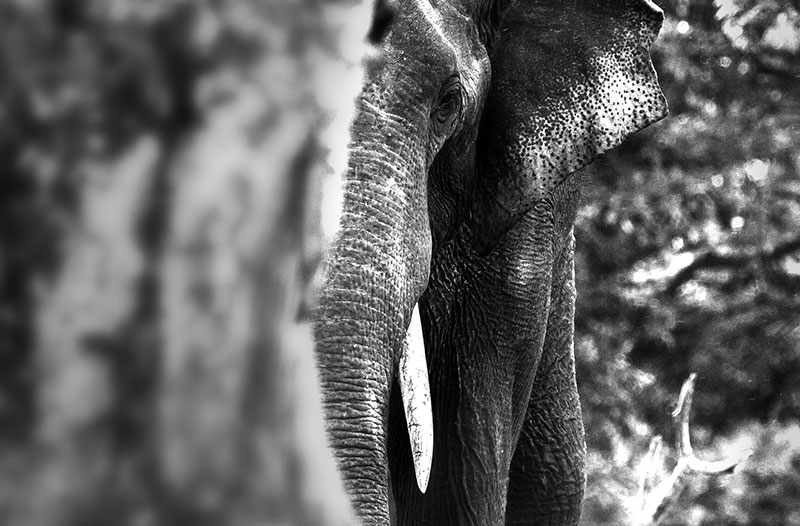sri-lanka / wildlife / wildlife-photography
GUARDIANS OF THE JUNGLE

Sri Lankan Tusker (Elephant) gazing on the grass behind a tree. He was one of the biggest elephants in the herd that we en counted and it was one of the best experiences that I had observing the natural behavior of these amazing mammals.
Sri Lankan tuskers are facing great danger from porches as they killed in search of ivory. Only 7% of male elephants in Sri Lanka grow tusks, and at present only 2% of the total elephant population are tuskers.
The biggest of the Asian elephant’, Elephas maximus (Linnaeus, 1758) is discovered uniquely in Sri Lanka and it is an unmistakable subspecies of the Asian elephant while thought to be firmly identified with the Indian elephant. When contrasted and the African elephant, the Sri Lankan elephant is more modest in size however more appealing in appearance. It has more modest ears with dorsal outskirts collapsed horizontally.
ONLY 7% OF MALE ELEPHANTS IN SRI LANKA GROW TUSKS. AT PRESENT ONLY 2% OF THE TOTAL ELEPHANT POPULATION ARE TUSKERS
The skin of this species is generally smoother and more obscure with bigger and more unmistakable patches of depigmentation on ears, face, trunk, and midsection. They have two mounds on their temple and the back is angled and curved while the storage compartment is more inflexible with fewer rings finishing in a solitary lip, a finger-like projection with which it can scoop minuscule articles up.
In weight, weighing somewhere in the range of 2 and 5.5 tons, a grown-up male of the Sri Lankan Elephants remains from 2.5m to 3.5m tall at the shoulder and has a life expectancy of 55 and 70 years.
Location: Undisclosed
Name: Sri Lankan elephant
Scientific Name: Elephas Maximus Maximus
Conservation Status: Endangered (population has declined by at least 50% over the last three generations)

Leave a comment